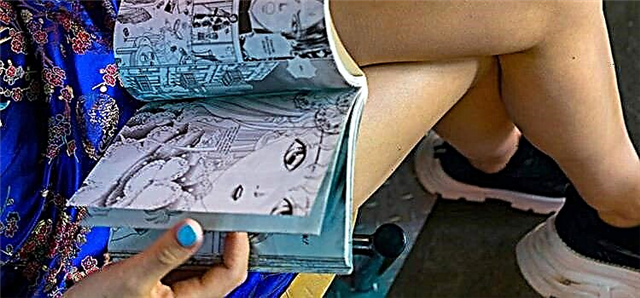The largest market for counterfeit coins today, as well as their largest industrial production, is located in China. Not surprisingly, China's coins are among the most counterfeited in the world. However, for the Chinese economy, this does almost no harm, which cannot be said about non-professional amateur numismatists, who are targeted by these products. What are the most frequently counterfeited Chinese coins?
1. Coin "Dollar and Junk" 1934
The first coin on this list shouldn't come as a surprise to most. The name of the coin was given by the Chinese sailboat "junk", depicted on the reverse side of the dollar. In total, about 100 million copies of this coin were issued, and 30 million were minted at the US Mint already in 1949, although the year 1934 is indicated on the coin. Due to its massiveness, the "dollar and junk" is one of the most common coins of its era.
2.Yuan Shikai dollar of 1914
In 1914, the first coins of the series dedicated to General Yuan Shikai began to be issued. The stamps for this series were designed by the famous Italian engraver Luigi Giorgi. This is confirmed by the name of the master, minted on separate copies of the coin. The dollar was made at the Tianjin Mint. The coin of this year of issue can be easily identified by 6 hieroglyphs on the obverse. Later editions contain 7 hieroglyphs.
3. "Memento" dollar of 1927
This dollar is actually a re-issue of the 1912 commemorative coin. Unlike the prototype, the 1927 coin features roses on both sides. There were two issues of this coin into circulation: in 1927 - to replace the Yuan Shikai dollars, in 1949 at the Canton Mint - to maintain paper money circulation. But none of the attempts led to the desired result.
4. Yuan Shikai dollar of 1920
Unfortunately, all varieties of this coin have been massively counterfeited.
5.Dollar 1911
One of the last coins of the imperial period in Chinese history, it is famous for its elaborate image of a dragon in the clouds. Stamps for minting were made by Luigi Giorgi at the Tianjin Mint, where this coin was actually minted. In addition, production took place at the mints in Nanjing and Wuchang. Despite the large circulation of these interesting coins, few of them have survived in good quality.
6.Gili province dollar 1908
The coin was minted in the last year of the reign of Emperor Guangxu. It is very likely that another run of coins was minted at the Tianjin Mint already during the time of the Republic, and for this reason this dollar is quite common. Collectors are attracted to the coin by the presence of various features of the minting, which has a positive effect on its value.
7.Hong Xiang's 1916 dollar
The design of the coin surprises with a magnificent image of Hong Xiang, better known as Yuan Shikan. The general is depicted in military uniform and a headdress with high plumage. Previously, it was believed that the issue of the coin was timed to coincide with the proclamation of Hong Xiang as emperor, but later it turned out that the dollar was issued as a commemorative coin after the death of Yuan Shikai. The coin was not intended for wide circulation.
8. 1908 dollar
The coin was produced in large quantities at the central mint in order to unify metallic money. This dollar is part of a series that also included 10 and 20 cents.
9. 1908 "Automotive" Guizhou dollar
One of the most popular Chinese coins issued to commemorate the construction of the first highway in Guizhou Province.
The coin is famous for the image of an American car that belonged to the governor of the province and was the only vehicle in Guizhou. For a long time it was not known where the coin was minted, since the province did not have its own mint. According to one of the latest versions, it is believed that the coin was made with equipment stolen from mints of neighboring provinces.
10.Dollar 1914
This interesting coin was struck on one of three rigs created by Luigi Giorgi in 1914 at the Tianjin Mint. There are two types of these coins in terms of thickness: 2.8mm and 3.35mm. A thinner version of the coin was put into circulation in 1914 with a circulation of 20,000 pieces. The thicker version was minted in 1918 for collection purposes. There is no significant difference in value between the two versions of this coin, and interest in them is steadily growing.
11. Dollar and Junk, 1932
This coin is often called "Jonka with the Birds", as the reverse side of the dollar depicts three birds flying over a sailing ship. The rising sun, the national symbol of Japan, was also minted on the coin. But after the aggravation of Sino-Japanese relations, the coin was quickly withdrawn from circulation. In total, over 2 million copies were minted and the demand for these coins is steadily growing.
12. Yuan Shikai dollar of 1919
This coin from a key period of the Yuan Shikai period is considered the rarest and most valuable coin, especially if it is in excellent condition.
13.50 cent Yuan Shikai 1914 coin
This coin is the 50 cent version of the Yuan Shikai dollar, and is exactly the same as the prototype. This series also produced 10-20 cents.
14. 1912 dollar
The coin is part of a series known as "Memento", issued to commemorate the founding of the Republic of China. The dollar depicts the President of China, General Li Yuanhong. Moreover, the coin was minted in two versions: on one - the ruler is depicted in a hat, and on the other - with his head uncovered. The second version of the coin was produced in larger quantities.
15.10 yuan with the 2000 panda
The one-ounce silver panda coin belongs to the so-called "mirror rings". There is also an option with a matte ring that frames the pattern of the Beijing Temple of Heaven on the back of the coin. Both types of coins are extremely popular with collectors and are often counterfeited.
16.Jiangnan provincial dollar 1898
It was struck at the newly opened Nanjing Mint in 1898. This coin is often referred to as the "Chinese calendar dollar" as the two characters on the coin indicate the 60 year cycle of the Chinese calendar. 1898 - Year of the earthen dog according to the Chinese cycle was the first year of issue of coins of this series. There are many varieties of this coin.
17. Dollar of the Hubei province of the period 1895-1907.
This series, with a declared circulation of about 20 million units, is considered one of the most common among dragon dollars. In order to induce the people to actively use new money, the authorities opened special points in cities where ordinary people could make sure that the coins were genuine. This is confirmed by the small hallmarks found on some coins.
18.A 1923 dollar depicting Cao Kun in military uniform
Cao Kun was president of the Republic of China for over a year, starting in 1923. When he came to power, he ordered the production of two types of silver coins. One version was dedicated to the new constitution, and the general was depicted in civilian clothes. The second coin was dedicated directly to the fact that the general was elected president, and on it Cao Kun appeared in military uniform.
19. Dollar 1914
The coin was minted in huge quantities, first in 1914, and then several years later with the aim of displacing early types of coins and foreign dollars from circulation. There are many varieties of coins. For example, a mysterious edition with a small circle near the left spikelet, depicted on the back of the coin. The purpose of this label is unknown. It is now believed by many that the circle was added to the stamp to denote later issues at the Shenyang Mint.
Twenty.Hubei dollar 1909-1911
This coin is very similar to the series from the period 1895-1907, but the hieroglyphs on the obverse indicate the name of Emperor Pu Yi.
21.Sichuan Dollar 1912
In 1912, China's new military government took over the Chengdu Mint and renamed it Sichuan. But this circulation should not be considered some kind of local provincial issue. The reverse design has 18 rings according to the number of provinces in China, and the hieroglyph in the center is executed in the Zhuanshu calligraphic style, referring to the period of the Han dynasty in China. This sign has become a symbol of the new government of the republic.
22. 1921 Yuan Shikai Dollar
1921 was the last year that the image of Yuan Shikai was minted on coins. Dollars of this period are not considered particularly rare, but demand for high quality items is always stable.
23. Tael of Hubei Province 1904
This 1 tael coin was issued during the 30-year reign of Guangxu, mainly for local use. A distinctive feature of the coin is the image of two dragons, which appeared only in this circulation. Like the early issues of Hubei province, the coin was not popular as a currency and minting was soon discontinued. As a collectible one-year coin, it is in high demand.
24.10 cent coin, 1911
This small silver coin is one of the last imperial coins minted in honor of the young ruler Pu Yi. It features an elaborate dragon that appears on the larger silver coins of this year. The minting was carried out at the Hunan Mint. The coin is famous for its image of the dragon, which makes it very popular among collectors.
25 Gansu Yuan Shikai 1914 Dollar
The young Republic of China, wishing to standardize monetary circulation, issued a new circulation of the dollar in 1914, thereby presenting a new portrait of Yuan Shikai to the whole country. However, this version had two characters on the sides of the portrait, indicating that the minting took place in the Gansu province, which angered the central government. The hieroglyphs were removed before the mass minting of this coin began.
We recommend watching:
What kind of bargaining chips currently exist in China? How many Chinese fen are in one yuan? What coin is called "blooming chrysanthemum"?



